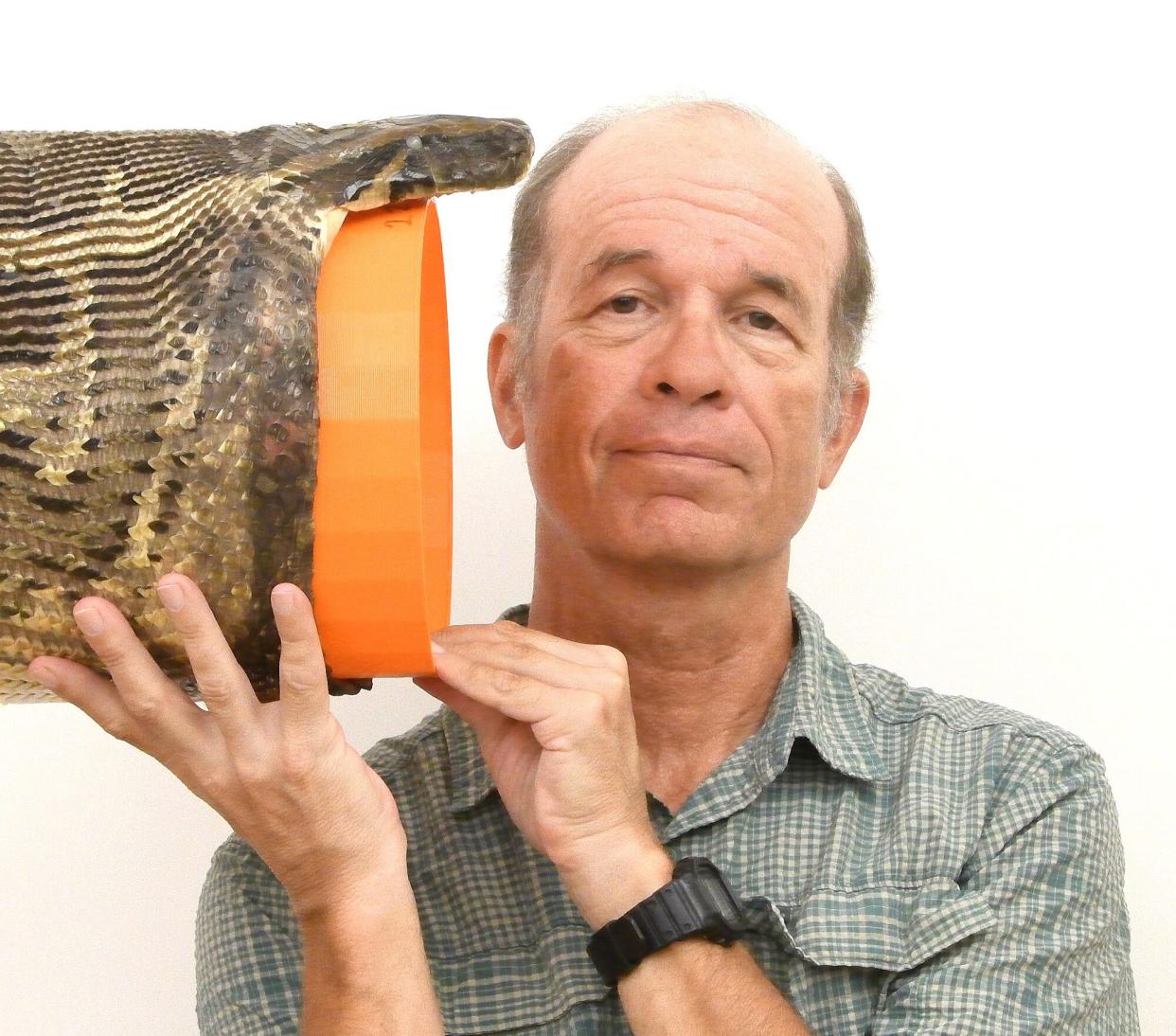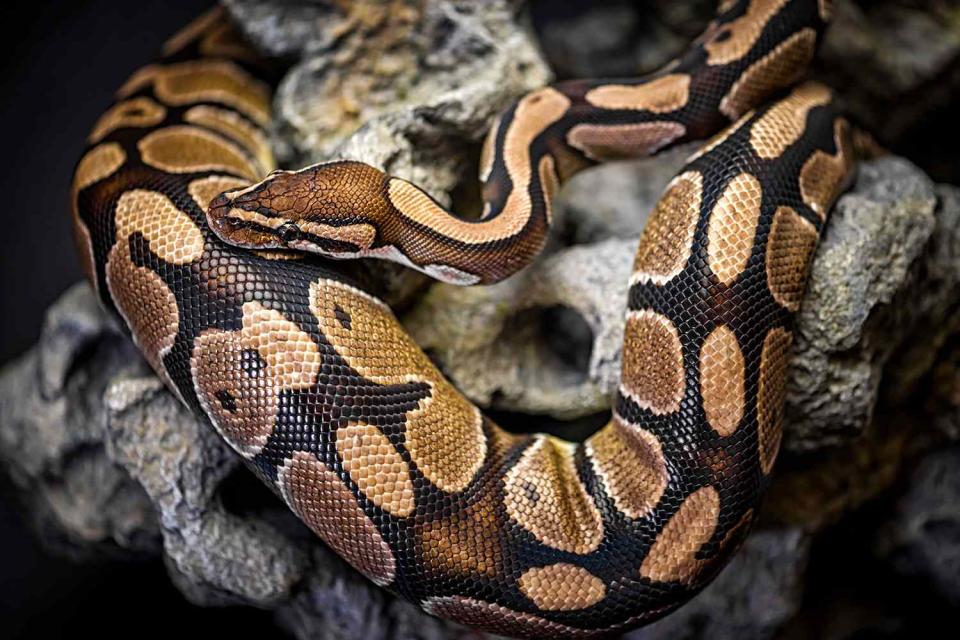How Pythons Kill: Expert Explains Shocking but 'Extremely Rare' Case of Woman Swallowed by Giant Snake

Courtesy of Bruce C. Jayne
After authorities found the body of a missing woman inside the belly of an enormous python, an expert explains to PEOPLE how an encounter with the constricting snake could turn deadly — and whether there's reason to be concerned by the shocking story.
"This is extremely rare," says Bruce Jayne, professor of biological sciences at the University of Cincinnati, of the recent news out of Indonesia, where a woman was swallowed by a python that reportedly measured more than 20-feet long.
Though there are cases of snakes eating humans, Jayne says, the "vast majority" involved very large pythons and people of a "rather small stature."
"It takes pythons a really long time to attain these really enormous sizes," he says. "As a result, there are actually very few of these really, really large pythons."
Invasive Burmese pythons have become a problem in South Florida, where Jayne says they're "wreaking all kinds of ecological devastation" and are "there to stay."
RELATED: Body of Missing Woman Found Inside 23-Ft. Python Near Plantation in Indonesia: Reports
Though thousands have been caught, he says, "the vast majority of those pythons are less than about 12 feet long or so," making it difficult for such a snake to swallow an adult person who might come across one.
If someone does encounter a python, however, "leave it alone and walk away," Jayne tells PEOPLE. "It's that simple. It's not rocket science. Don't mess around with it."
But snake attacks do happen, usually when people keep the creatures as pets. In January, a Maryland man was found dead in his home with more than 100 snakes, including a 14-foot python. An Indiana woman was also found dead in 2019 with an 8-foot python she kept in her home wrapped around her neck.
"Acknowledging that all this stuff is rare," Jayne says, "it does happen on occasion, and there are a few things involved in eating people."

Getty
"First of all, is the snake hungry?" he continues. "And then: Is [the potential prey] close enough?"
Pythons have heat-sensing pits along their mouth to help them detect their next meal. "If you have something that shows up and is warm and it's moving, those two things start looking pretty attractive to a python," Jayne explains. "Some of the snakes I've had in my lab are very aggressive feeders, and sometimes they would actually strike the front of the cage if someone walks in front of it because they would see that movement and then also there would be that heat signature of the person walking by the cage."
RELATED: Md. Man, 49, Found Dead in Home Filled with Over 100 Snakes — Including 14-Foot Python
And the good news, Jayne says, is most people are able to quickly get away if they encounter a python.
"Snakes are actually not very fast," he says. "These large, heavy pythons are really quite slow. So, usually, one could readily just walk away from a python and it's not going to chase someone down unless someone can't even walk at a reasonable speed."
However, he says, pythons can strike fast. Their range, he says, is usually about a third to a half the snake's length – sometimes more.
If a large python does strike, "that would be a problem," Jayne says. "They're very strong."
Pythons have teeth, which Jayne described as "needle sharp," but they don't chew their food. Instead, the teeth are used to trap their prey, which they eventually swallow whole.
"The tips of those teeth point to the back of their mouth, so when prey or people try to pull out of the mouth of the snake, those teeth actually sink in deeper," he explains. "So, it's very hard to disengage. Their teeth are very specialized for basically keeping prey in the mouth."
The snake then begins constricting, a process that would be very difficult and take "considerable effort" to stop once it's started.
"Snakes that are that big," he says, "it would take an effort of a few people to try to uncoil it."
RELATED: Georgia Woman Finds 17 Baby Snakes and Their Mom Under Bed: 'I May Need a Cardiologist After This'
According to Jayne, scientists' understanding of how constricting snakes kill their prey is evolving.
"It used to be thought that the prey would simply suffocate because the snakes would tighten their coils. If you think of how you breathe, your ribs expand and contract, and if a snake tightens every time you exhale, then the problem is you can no longer inhale once those coils are tightened," he explains.
"However, more recent research suggests that the times to death are so fast, and the measured pressures are so high, that it actually impedes the function of the heart," he continues. "So you can kill a vertebrate much faster by stopping blood flow than by stopping breathing, and it appears that's the case."
Either way, "once they have the coils around something," Jayne says, "that's another big problem."

Getty A Burmese python
If a snake is successful at killing its prey by constriction, "they need to be able to swallow whatever they've killed. And all snakes have many adaptations that allow them to swallow very large prey whole," Jayne says.
Jayne recently published a paper about the anatomical specializations Burmese pythons have that helps them swallow things bigger than other snakes that are just as long.
RELATED: Louisiana Aquarium Shut Down After 12-Foot Python Escapes
"A really noteworthy feature of the Burmese pythons," he says, "is that the skin between the lower jaws stretches very readily."
Another thing these snakes have a talent for is hiding.
"When I started my research with the Burmese pythons in South Florida, I was actually hoping to personally collect the specimens for my anatomical work. And it's not easy," Jayne tells PEOPLE. "So even though the dog-gone snakes are numerically abundant in South Florida, you may not know it because you have to work a lot before you can even find one. It's just amazing how sometimes you can nearly stumble upon the snake so you are very close to it indeed, and then all of a sudden, you're close enough to it that it could strike and attain a grip and then go ahead and constrict."
Still, Jayne urges people to not be afraid of these giant, nonvenomous snakes. "In South Florida, the vast majority of those snakes anyone would encounter are not the least bit dangerous to humans. People have terribly exaggerated fears of snakes that are not well-founded," he says.
"Unless it's a truly gigantic specimen, they're just not much to be scared of if you're an adult human," he continues. "Now, it's a different thing if you have really small children or pets."

